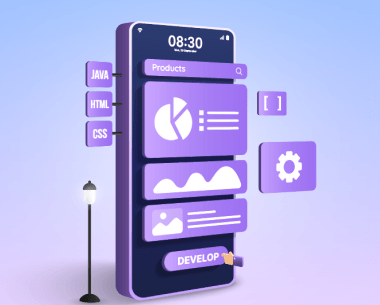As of March 2025, the mobile development landscape has evolved significantly, driven by rapid technological advancements and shifting user expectations. Staying abreast of these developments is crucial for developers and businesses aiming to remain competitive. Here are the key mobile development trends shaping 2025:
Trend #1: Expansion of Augmented Reality (AR) and Virtual Reality (VR)
AR and VR technologies have advanced, providing more immersive and interactive experiences within mobile applications. These technologies are being utilized across various industries, including gaming, education, and retail, to create engaging environments that blend digital and physical worlds. The proliferation of AR and VR is supported by the increased capabilities of modern mobile devices and the widespread availability of 5G networks.

Trend #2: Rise of AI-Powered Personalization
Artificial Intelligence (AI) continues to play a pivotal role in mobile app development, particularly in delivering personalized user experiences. By analyzing user behavior and preferences, AI algorithms can tailor content, recommendations, and functionalities to individual users, thereby enhancing engagement and satisfaction. This trend is evident in various sectors, including e-commerce, entertainment, and health, where personalized interactions are key to user retention.
Trend #3: Emergence of Super Apps
Super apps, which consolidate multiple services into a single platform, have gained significant traction. These applications offer users a unified experience, encompassing services such as messaging, payments, shopping, and transportation. The convenience and efficiency of super apps have led to their widespread adoption, particularly in regions where users prefer all-in-one solutions over maintaining multiple standalone applications.


Businesses are already utilizing a number of popular PWAs to give users interesting and straightforward experiences. With features like push notifications and an offline mode, Twitter’s PWA offers users a more app-like experience. Another illustration is Pinterest’s PWA, which offers users a rapid and responsive experience and makes it simple for them to find new material.
Businesses may employ PWAs in the future to give customers more customized and interesting experiences. For instance, a retailer may develop a PWA that offers tailored suggestions based on a user’s browsing and purchasing history and lets consumers browse and buy things in a more app-like environment. PWAs might become a crucial tool for companies aiming to provide their consumers with compelling and intuitive experiences as they continue to grow in popularity and sophistication.
Trend #4: Development for Foldable Devices
The resurgence of foldable smartphones has introduced new design considerations for mobile applications. Developers are optimizing apps to seamlessly adapt to various screen sizes and orientations, ensuring a consistent and user-friendly experience across traditional and foldable devices. This adaptability enhances multitasking capabilities and offers users more versatile interaction options.
Trend #5: 5G Technology
The widespread adoption of 5G has revolutionized mobile applications by offering faster speeds, reduced latency, and enhanced connectivity. This advancement enables developers to create more complex and data-intensive applications, such as high-definition streaming services, real-time gaming, and augmented reality experiences, without compromising performance. The improved network capabilities also facilitate the seamless integration of Internet of Things (IoT) devices, fostering more interconnected and responsive ecosystems.


The mobile development industry in 2025 is characterized by rapid innovation and adaptation to emerging technologies.Developers and businesses must remain vigilant and responsive to these trends to deliver applications that meet evolving user expectations and leverage the full potential of technological advancements. Embracing these trends will be instrumental in creating engaging, secure, and high-performing mobile applications in the years to come.
Conclusion
Finally, the mobile development prospects for 2025 are promising and interesting. In this year, substantial advancements are anticipated in augmented reality, artificial intelligence, progressive web applications, voice interface technology, and 5G. Developers that keep up with these developments will be in a good position to produce creative and profitable mobile apps.
Being the future of the industry, these developments are crucial for mobile developers to remain up to date on. Developers may be proactive in making cutting-edge apps that satisfy the demands of consumers and companies alike by keeping an eye on what’s coming next.
It is obvious that the future of mobile development is promising when looking ahead. With so many new developments in the works, there are countless opportunities to develop engaging and cutting-edge apps. As a result, we urge every developer to keep up with the most recent developments and to try out new tools and methods in order to advance the industry.
If you’re looking to develop your own mobile app or game, don’t hesitate to reach out to us at Eventyr. Your ideas may come to life with the assistance of our highly skilled professional staff, who will operate under your direction. For further details, contact us, and let’s collaborate to produce the next great thing in mobile development!






